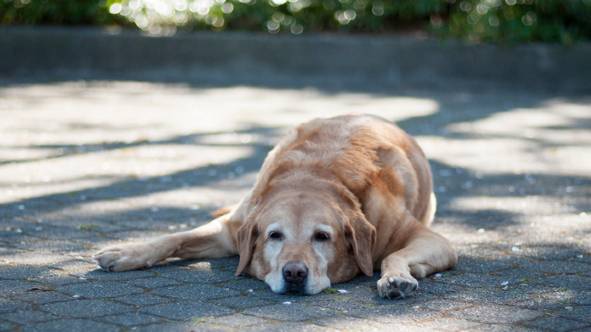How to avoid dog heatstroke
Dogs can die from heatstroke and prevention is always going to be better than cure

UK charity and vets have indicated that at least nine breeds in particular are of high risk of heatstroke.
(Image credit: Getty Images)Knowing how to avoid dog heatstroke is crucial, particularly during the Summer when temperatures inevitably reach their peak. Failing to spot the signs of overheating and doing little to help canines keep cool can have fatal consequences. That may sound dramatic but, in reality, there is no point in downplaying the risks.
If you're asking, "Why is my dog panting so much?" then there's a good chance you need to take action. Likewise, if you're noticing excessive dog drooling then your pet may have a problem. It's at this stage that you need to equip yourself with the knowledge and understanding of how to cool down a dog before the problem becomes worse. As we discuss in this guide, there are plenty of things you can do to both avoid and treat heatstroke.
For instance, you can make sure your dog can rest in the shade and access plenty of water. You could even consider investing in one of the best pet water fountains or discover 10 frozen dog treats and ice-cream recipes to make for your pooch. Let's take a more in-depth look at what you can do.
What is heatstroke in dogs?
Also commonly referred to as heat exhaustion or overheating, heat stroke in dogs occurs when their body temperature rises to more than 102.2 degrees.
Dogs have very little sweat glands so struggle to regulate their temperature during periods of extreme heat.
Their way of losing heat is through panting. However, if you have noticed that this becomes excessive, you need to look out for the following signs of heatstroke in dogs, which could indicate that something more sinister is going on:
- Difficulty breathing
- Excessive drooling
- Vomiting and/or diarrhea
- Weakness and/or stumbling
- A sudden collapse
- Seizures
How to prevent heatstroke
When temperatures reach above 80 degrees or it is incredibly humid, it’s important to consider whether your pooch is at risk of developing heat stroke.
Top tips include:
- Walking your dog during the cooler parts of the day, such as first thing in the morning or late in the evening
- Don’t ever leave your dog in a parked vehicle. Even on days in which there isn’t any sunlight, heat can reach dangerous levels quite easily inside a closed car.
- Whilst outside, ensure that your dog has access to shade and fresh, clean water. Here's the answer to, 'How much water should my dog drink?'
What to do if your dog is suffering from heatstroke
If you notice that your dog may be suffering from heatstroke, you must act immediately before it’s too late.
Firstly, get them inside or to a shady spot where their temperature can begin to lower and offer them some cool (not cold) water to drink.
If this doesn’t appear to help, check your canine’s temperature and, if above the normal range of 100 to 102.2 degrees, soak towels in lukewarm water and place them over your dog’s body.
However you choose to help your dog cool down, be sure to do it gradually. Any drastic changes in body temperature could affect their blood pressure in a dangerous way.
Should your pooch's condition not improve after ten minutes of trying to cool them down, contact your veterinarian immediately.
PetsRadar Newsletter
Get the best advice, tips and top tech for your beloved Pets
Chloe is a freelance writer, editor, and proofreader, who has more than ten years’ experience in creating animal-focussed content. From National Geographic to Animal Planet, Chloe’s passion for creating fact-filled features all about wildlife and the environment is evident. But it’s not just wild animals that Chloe’s fascinated by. Having written more than 75 articles for PetsRadar - and having her very own four-legged friend by her side - it’s no wonder that her love of dogs (and, of course, cats) has grown exponentially.
Her website, www.chloemaywrites.com, and social media pages - @ChloeMayWrites on Instagram, Facebook, and Twitter - showcase her knowledge through daily facts and trivia tidbits. For example, did you know that snails have teeth?!
- David CrookesFreelance writer

